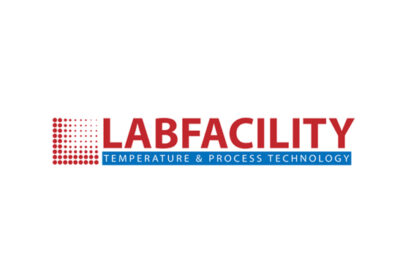Roscomac invested some £750,000 with Citizen Machinery UK in the first six months of 2017 for the installation of a Miyano BNE-51MSY multi-axis turn-mill centre and two Cincom sliding head turn-mill centres a top-of-the range M16-V, and a L20-VIIILFV. But, such was the immediate success in productivity uplift and problem solving terms of using low frequency vibration (LFV) technology on the L20, that Managing Director Joe Martello ordered two further Cincom machines, a duplicate specification L20 and a smaller capacity L12-VII, both to have LFV technology.
Said Cell Leader of the Worthing-based sub-contractor, Sean Keet: “We had been experiencing constant problems with swarf when machining certain difficult components made from high grade alloy and some stainless steels plus copper, plastics and even some difficult specification aluminiums. Despite constant monitoring, we often faced significant levels of scrap or re-working, in particular due to swarf marks on critical features.”
However, he now maintains that production of these parts has been totally transformed following the installation of the Citizen Cincom L20-VIIILFV turn-mill centre in July and such was the level of realisation that within weeks Mr Martello insisted we bring forward 2018 investment plans and immediately ordered two further machines with LFV. He then added: “Our production people are now insisting that any further sliding or fixed-head machine installations must involve LFV as it is such a game changer.”
LFV is based on initiating selectable sequences programmed at the machine control through ‘G-codes’ to impart the size of chip to be produced. This introduces oscillation of the cutting tool through the servo axes of the drive system in the direction of feed in phases of tens of microns which are precisely synchronised to the rotation of the spindle.
The resulting controlled ‘air-cutting’ breaks the swarf into a designated chip size which prevents ‘bird-nesting’ and can be applied to turning, drilling and even threading cycles. LFV can be switched in or out of the programmed cycle as required and helps reduce the on-set of built-up edge on the tool tip, extending its in-cut life. It also allows deeper depths-of-cut and enhances the achievement of improved surface quality.
Mr Keet outlines from his investigations of the market that you cannot get the same results from utilising, for instance, a macro in the control. He said: “The machine has to be built to obtain the level of rigidity, control over vibration and create process stability which we are achieving across each component we have run through the machine.”
As an example he outlines the immediate savings made on tool life when machining special levers out of 174PH stainless steel. These are 7 mm diameter by 44 mm long with milled flats, a slot across one end, a turned waist 2.8 mm diameter by 20 mm long and a drilled and tapped M3 hole in one end. Tolerances are typically 0.05, but 0.008 mm has to be maintained over a 4.10 mm length at one end of the component. Surface finishes are Ra 1.6.
Due to the demands of the material, two changes of tools had to be made each day to produce just 100 parts along with other interruptions to effect utilisation. But with LFV, inserts are now changed every two days and 400 parts are now machined between each change. Further improvements due to the ability to run the Cincom machine without its interchangeable guide bush, relieves any need for frequent adjustments allowing us to use of non-ground bar to slash projected material costs by £2,000 a year. Also, without the guide bush and LFV, Roscomac has eliminated any problems with swarf carried over into collets.
Other savings from LFV have almost come out-of-the-blue. For instance, neat oil was being topped every two days. Now because the size of chip is controlled negating stringy swarf, experienced on the previous Citizen machining method, Roscomac is now topping up oil just once in a month.
Meanwhile, due to consistency of production and reduction in attention to the machine from setters, once the new L20 and smaller capacity L12 machines are commissioned, manning levels will be downsized from one operator per machine to one between three machines. Said Mr Martello: “As machines are run through three shifts, this provides a significant leap in productivity levels and demonstrates the stability of production which is of benefit to our quality systems and of course, customers.”
Mr Keen describes how pre-LFV the existing 13 Citizen machines installed on the shopfloor were sometimes subject of concern on machine loading due to late customer order increases and thus keeping up with their demands. For instance, a family of 50 different components for the food industry which were often required in batches up to 30 a month, we were often stopping to make minor change-overs for the similar parts.
He said: “Once the LFV machine was installed in October we were so confident in the performance that we discussed with the customer and agreed to stock parts for immediate call-off and run a year’s supply in single batches without interruption. Another customer required 2,000 difficult parts a month. We again agreed stockholding of 10,000 parts giving them faster on-demand delivery and us a single batch run.”
Family-owned Roscomac has a turnover of £6.5 million and currently produces over 1.5 million parts a year. Part of its success is the building of a reputation for 98 per cent on-time deliveries of completed assemblies to large machined castings. It has a turning capacity up to 15 ins, a large 104 pallet flexible manufacturing system, a further 17 machining centres plus its now 15 Citizen installations which are used for smaller turned parts between 1 mm and 51 mm bar size. As Mr Martello said: “With the LFV factor on the new machines this will help maintain our productivity targets now running at 200 per cent of man/hours available.
There are 85 people employed and such is the positive state of its order book that without continuous investment in advanced machining techniques it would be very concerned and especially to meet the ever-growing first quarter order book for 2018.
Set up in 1976 by Joe Martello’s father Fernando, who is still involved with the business, it has grown to occupy a 43,000 ft2 climate controlled to 22 deg C facility on its two-acre site in Worthing. During 2018, a 3,800 ft2 extension is to be added to house some of the 50 CNC machine tools and meet its further installation programme.
Said Cell Leader Leon Turner: “At the moment most cycle times are the same as on the existing non-LFV Cincom machines and we use the same programs. However, we are running aluminium at much faster rates and increased depths-of-cut and once the two new machines are commissioned we will run one L20 with guide bush and the other without. This will again improve our downtime eliminating an element from resetting. The L12 which has a faster spindle speed of 15,000 revs/min and 10,000 revs/min for driven tools will be ideal for our range of smaller workpieces freeing up the L20’s for bigger components.”
Now with such a positive feedback and the resulting impact of LFV in the production processes of the Citizen Cincom machines, the engineering team has been charged to look back over enquiries. They are looking for work that was declined to quote due to not being suitable, or may have caused problems in maintaining the normal level of service with customers.





